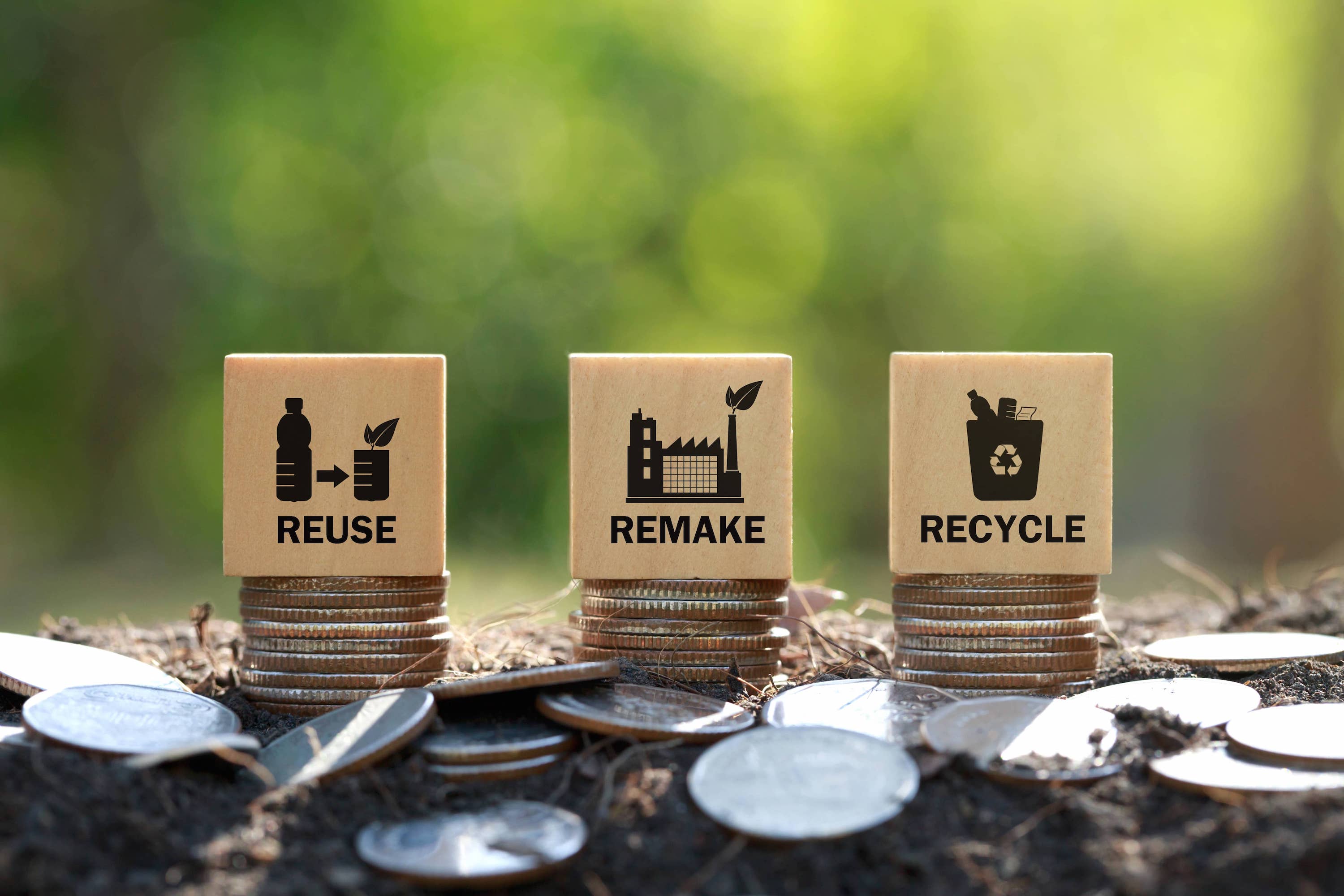
When one thinks of an economic system in harmony with nature and the land, the shape of the circle always comes to mind, of the interconnection and nature that from a source becomes capital and then returns to transform itself into ever new elements.
Continuous regeneration, in an organic system, therefore, where there is no waste and which, through the various technologies available, succeeds in re-introducing into the production cycle always new lifeblood for the companies, which collaborate in the entire chain and phases of the process, to optimize resources and produce as little waste and pollution as possible.
This is, in short, the perfect circular economy model that has been taking shape since the late 1970s, when it began to be realized that the linear 'make-take-dispose' model was no longer sustainable in the long run, but had to be replaced with a production and consumption model that aims to extend the life cycle of materials and products through modes such as sharing, lending, reusing, repairing and other goods, creating a new way of bringing supply and demand together.
Using a definition developed by the Ellen MacArthur Foundation, a promoter of this development model, a Circular Economy is defined as "an economy designed to regenerate itself. In a circular economy, material flows are of two types: biological ones, capable of being reintegrated into the biosphere, and technical ones, intended to be regenerated without entering the biosphere”.
With this classical definition of circularity, the environmental factors inherent in the model are essentially taken into account. Today, the model can boast an extended system according to ESG criteria, leading the circular economy to be the way to realise the integrated system of sustainability.
It is not only a matter of optimizing resources and respecting environmental criteria in the circular model but the areas of social and governance are also impacted, whereas as in the former, local communities are involved to bring them on board for the achievement of common sustainable goals, in the area of governance, at the corporate level, we find the commitment to stakeholders to be compliant with ESG criteria and ethical principles, which often leads to the drafting of one's own Code of Ethics.
Circular economy and supply chain
A prerequisite for the establishment of a functioning circular economy model is a collaboration between companies belonging to the same or different supply chains. Generally, a circular supply chain is based on a system of environmental and social pre-qualification through sustainability ratings, relies on the selection of more local suppliers and enters into a distribution network of local markets. To this end, the establishment of partnerships and agreements for stable collaboration between actors, aimed at the exchange of resources, is important.
The supply chain, which is subdivided into companies producing goods and services and companies in the various production stages of the supply chain, is generally based on 5 main assets, which can be identified in:
- Production process inputs, i.e. raw materials;
- Production processes
- Marketing and post-use of the product
- Assets and operations (buildings)
- Strategy and innovation
Among these five macro-areas, the necessary actions are taken to establish a virtuous circular supply chain.
Circular Economy Impact Areas
To explore the links of the circular economy, it is necessary to consider certain areas of the production process and with them certain practices that are developed.
The main areas that a circular economy model deals with are the following:
- Ecodesign
It concerns the design of the product with a view to circularity, considering all stages of the process, from the supply of resources to its disposal, and also planning return logistics for the reuse of materials.
- Business model
Here, new revenue models are considered, where within a company or supply chain, for example, instrumental production assets are shared, or remuneration logics are established based on the actual use of the asset.
- Natural capital
In procurement, the replacement of depleting or non-renewable raw materials with secondary materials or biomaterials is considered. Substitution of materials and substances that are polluting, toxic and hazardous to health and the environment is also carried out.
- Renewable energies
When using energy for production purposes, priority is given to the use of energy from renewable sources or fuels from renewable sources. In the paradigm of the circular economy, based essentially on activities defined as 'transitional' by the Taxonomy, the aim is to push towards alternative energy models that consider an appropriate and optimized consumption of resources, with a view to energy efficiency.
- Waste Management
Actions aimed at optimizing waste management are fundamental to the circularity paradigm, as waste must tend to become new resources that can be reintegrated into the production system. Efficiency in reverse logistics, waste and scrap prevention and recovery, together with the reduction of polluting emissions into water and the atmosphere are considered for this purpose.
The above-mentioned, together with many other areas of application of the circular economy, such as the transition of transport and distribution to long-range and sustainable systems, or the raising of awareness in local communities of sustainable lifestyles, ranging from mobility to purchasing and consumption styles, are the practices that have been put in place to date to realize a system of economy, which can make people look to the future again from a circular perspective.
As is well known, looking to the future is also a way of looking to the past, to take a cue from virtuous practices even of a few centuries ago, as theorized by many economists at the time, to re-create a production system that is based on the very essence of the circle, repeating itself continuously and not leading to an end, be it of resources, capital or biodiversity.



